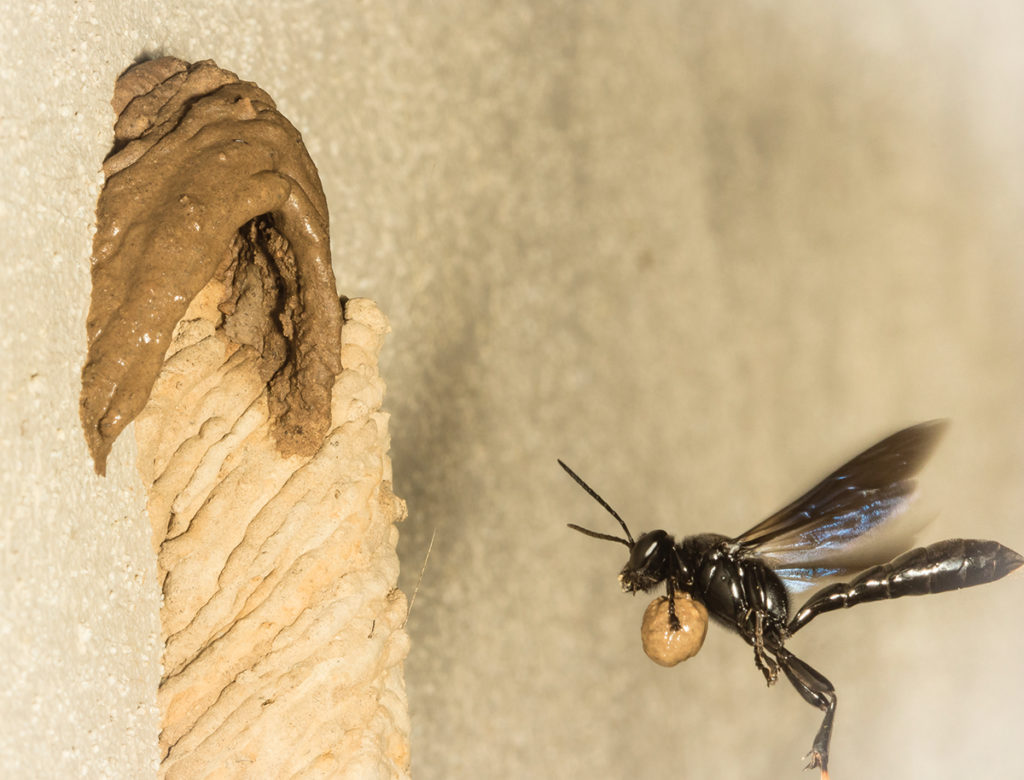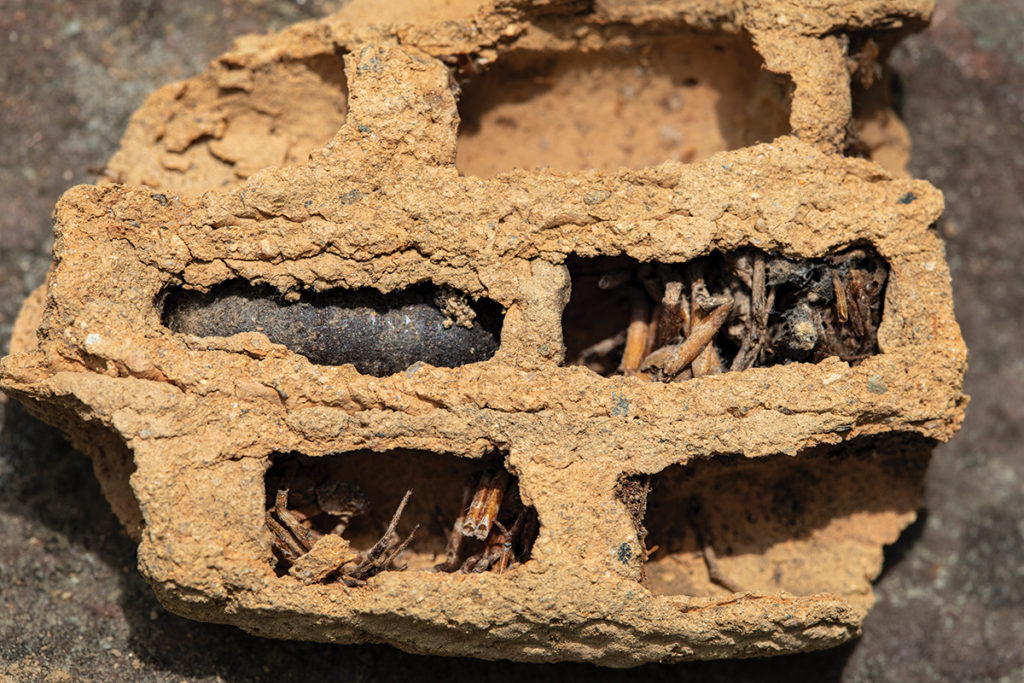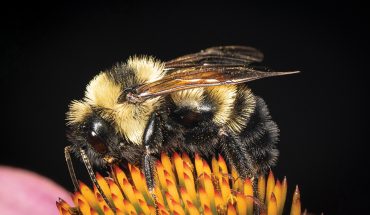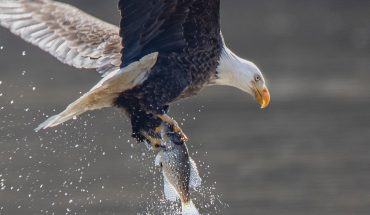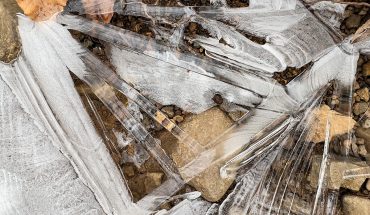Mud dauber wasps are non-aggressive insects that are unlikely to sting — and expert architects that build intricate nests.
words and photographs by Mike Dunn
Wasp! The word usually elicits a fearful response — especially for folks who’ve had an experience with the business end of one. But stinging wasps like yellowjackets, paper wasps and hornets are actually the minority; these are the more social of the species, ones that congregate at a nest site and guard it from any interlopers.
The vast majority of wasps are solitary, with females building and provisioning their own nests, and they tend to be much less aggressive. We don’t know how many species of wasps we have here in North Carolina; one estimate predicts that around 2,000 different wasps may call our state home. Most people know only a handful of these.
One group of wasps many homeowners are familiar with are those known for their mud structures. These are often found around buildings, usually under the eaves or in some other place protected from the rain; in nature, you can find them under loose tree bark or rock ledges. We know them as “mud daubers,” “dirt daubers” or simply “dobbers.” While many people may know their name and realize they are wasps, few are aware of their fascinating life history — and are often unnecessarily wary of their presence.
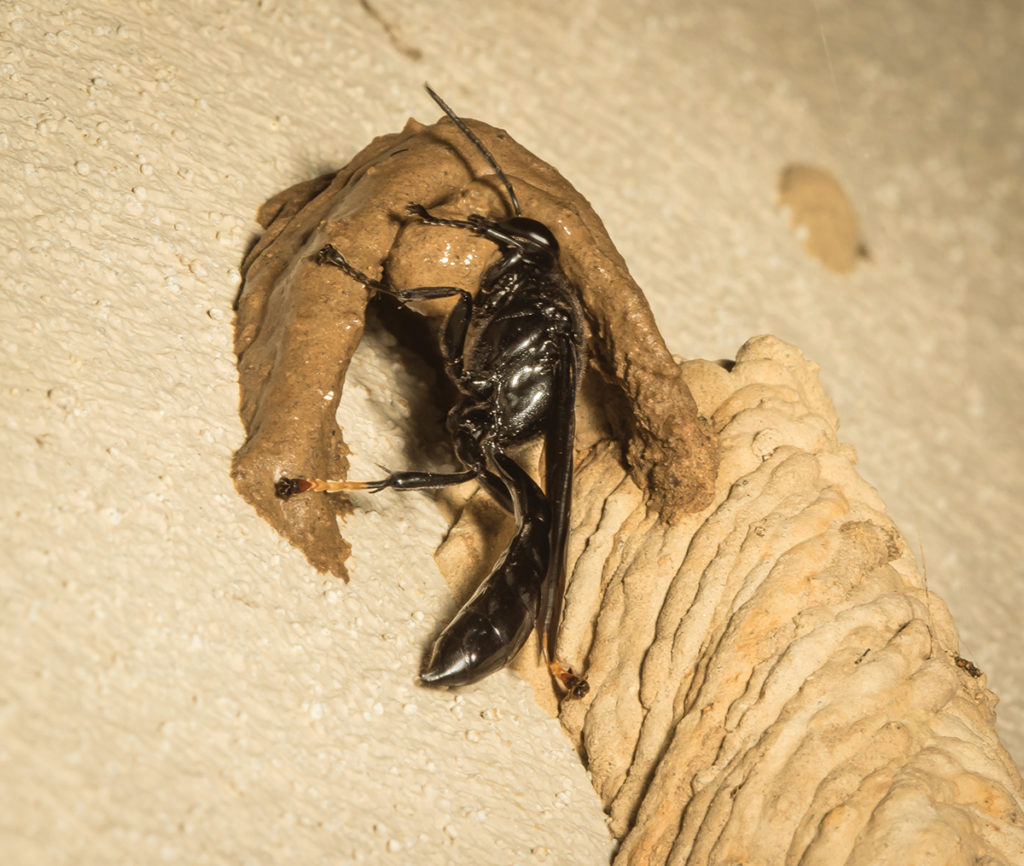
We have three of these wasps in our area: the Yellow-legged Mud Dauber, Blue Mud Dauber, and Organ Pipe (also called Pipe Organ) Mud Dauber. Each is distinguished by its nest made of mud. The first builds a globular nest made up of small horizontal tubes, often with a coating of extra mud smeared on the outside. Blue Mud Daubers refurbish the nests of the Yellow-legged Mud Daubers, emptying the contents of old nests and patching exit holes with mud, often leaving a bumpy appearance. These look a bit like a mud ball a kid might have thrown at a wall.
The best-known architects of the group are Organ Pipe Mud Daubers, whose distinctive nests are vertical tubes up to 6 or 7 inches long, usually with several joined together to resemble a pipe organ. The female wasp chooses a protected site, usually near a reliable source of mud, and begins building her nests shortly after mating. She gathers mud in her mandibles and forms it into a ball, which she carries back to the nest in her front legs. Back at the nest, you may hear a buzzing sound as she rapidly flexes her flight muscles to vibrate her head and mandibles as she spreads the mud into place on the tube. These high-frequency vibrations help liquify the mud, making it easier to spread evenly. Look closely at one of the tubes and you can see it is constructed of numerous mud arches, with each half of an arch usually representing one trip to the mud hole. A tube usually takes a few hours to a day to complete.
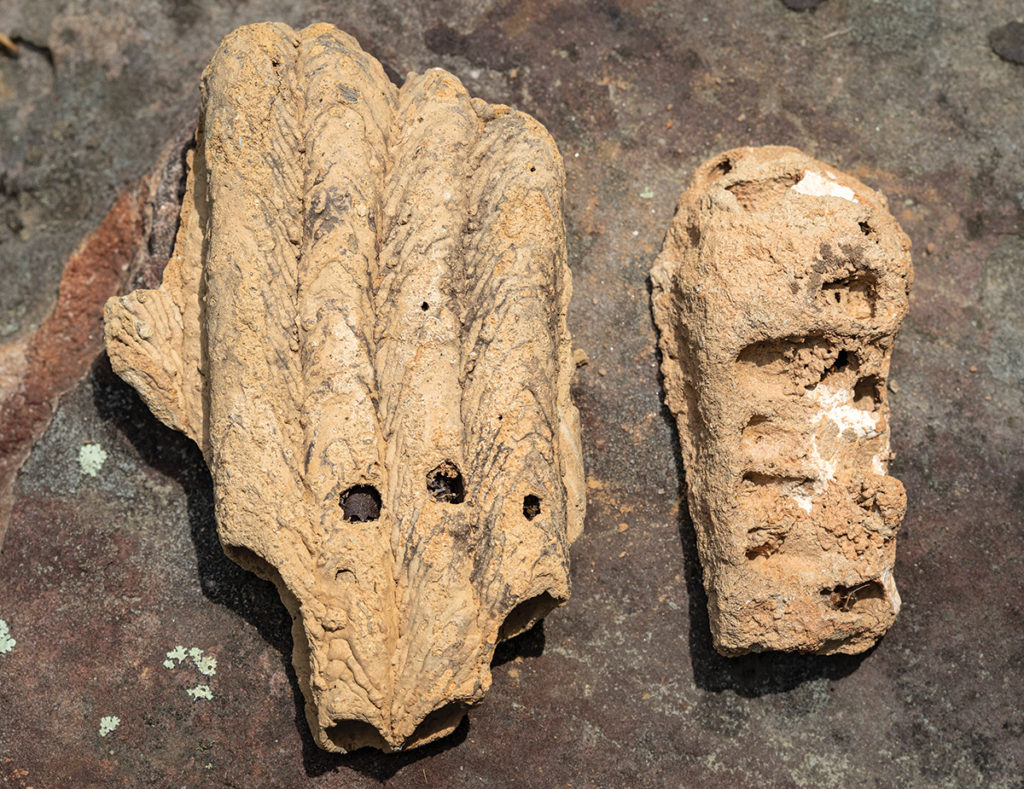
After she is finished, the mud dauber female begins to hunt for food to stock her larder for future larvae. All three types of mud daubers in our area provision their nests with spiders (mostly web-building species), which they hunt and paralyze with a precise sting. Keeping the spider alive ensures a supply of “fresh meat” for her young. An Organ Pipe female will bring several paralyzed spiders back to the nest, lay an egg on one of them, and then seal them into a single cell with a mud partition. She repeats this process until the tube is filled with five or six sealed cells, each with one egg surrounded by a load of spiders. An interesting side note: Blue Mud Daubers specialize in capturing cobweb-building spiders, including Black Widows!
A male wasp may guard the nest while the female hunts, warding off competing mud daubers or parasites. Certain beetles, flies and other smaller wasps will try to sneak in and lay their eggs on the spider cache while the female is out. The parasite egg often hatches first, and that larva usually consumes the mud dauber egg in addition to the spiders. Studies show that if a male is present, there are fewer parasites in the cells, resulting in higher hatching success for the mud daubers. But if all goes well for the mud dauber offspring, the wasp grub hatches in a few days and consumes the paralyzed spiders. It then spins a silken cocoon and forms a pupal case, within which it transforms into an adult. The emerging wasp chews an exit hole through the tube about the diameter of a pencil. If you see smaller holes in the tubes, those were probably made by departing parasites.
There’s a lot to like about mud daubers, including the fact that they are non-aggressive. As with other wasps and bees, only the females have stingers, and you would probably have to catch one and squeeze it in order to get stung. Plus, they’ve long lived companionably alongside humans. Years ago, while waiting in line under a shed roof to pay for some pottery at a local arts tour, I looked up and spotted numerous mud dauber tubes. I started telling my friend about the wasps and another potter overheard me. He went inside and gave me a set of tubes he had fired in his kiln, explaining that the mud the wasps use is excellent for firing.
I have shared the amazing story of mud daubers in many teacher workshops — and it turns out most school buildings have at least a few nests on their exterior walls. One elementary school became so enamored with these tiny clay makers that they created what is probably the only known mud dauber preserve at a mud hole near the parking lot, erecting a sign, “Dirt Daubers Mud Factory,” to commemorate and protect the site.
So enjoy having our dobber friends as your outdoor neighbors. They are non-aggressive, fascinating to observe and may have even helped inspire some of your favorite mugs and vases.
__
This article originally appeared in the June 2022 issue of WALTER Magazine.

